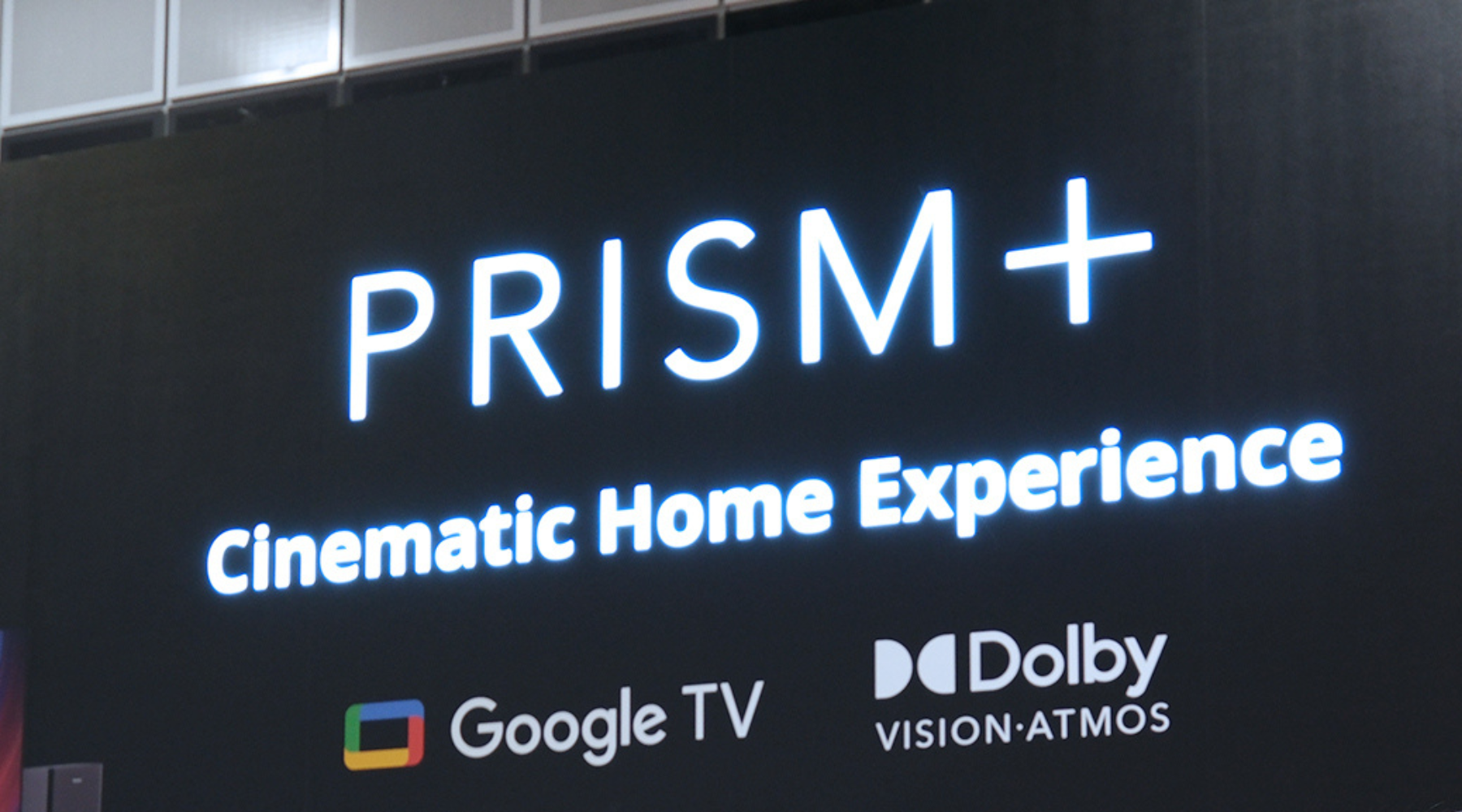Table of Contents
What is Dolby Vision and Dolby Atmos? - A Must-Have For a Home Cinema

Have you ever watched these movies: Black Panther, Interstellar and Toy Story 4? Well, these masterpieces were released in Dolby Vision and Dolby Atmos!
Do you know that you can have a similar experience just like in the cinema but instead, in the comfort of your own home? Only newer and high-end TVs are known to have Dolby Vision and Atmos technology, so check out PRISM+ TVs such as the PRISM+ Q55 Ultra and Q65 Ultra, that will elevate your viewing experience at an affordable price.
So what exactly is so good about them?
What is Dolby Vision?
Dolby Vision is a high dynamic range (HDR) format/technology that offers a wide range of colours, brighter highlights and deeper blacks than your traditional HDR. It works by optimising the image scene by scene.
This means that Dolby Vision uses a technology to display the images as close to what was originally intended by the filmmaker. The images will appear more lifelike, providing a more immersive experience. With Dolby Vision, you can enjoy your favourite movies and TV shows the way they were meant to be seen, with stunning image quality and intricate detail.
What is Dolby Atmos?
Dolby Atmos is a surround sound audio format that provides a more realistic sound experience that you can immerse yourself in. It uses object-based audio to create a 3D soundscape, allowing sounds to be placed and moved in space.
Dolby Atmos is used in movie theatres and is also available on many home theatre systems and soundbars. This means that you can hear sounds coming from all around you, from the subtlest whispers to the loudest explosions, making your favourite movies and TV shows come to life.
How do Dolby Vision and Dolby Atmos enhance the home entertainment experience?
Together, Dolby Vision and Dolby Atmos work hand-in-hand to create a more cinematic experience.
With Dolby Vision, you can enjoy stunning image quality and incredible detail.
Dolby Atmos, on the other hand, will take your audio experience to the next level, providing a 360-degree sound experience that surrounds you from all angles.
Together, these innovative technologies will transform your living room into a home cinema.
How Can You Enjoy Dolby Vision and Dolby Atmos at Home?
To enjoy Dolby Vision and Dolby Atmos at home, you'll need a TV that supports the formats and a sound system that is compatible with Dolby Atmos.
The PRISM+ Ultra Series TV features both Dolby Vision and Dolby Atmos built into its TV. However, we always recommend pairing the TVs with a Dolby Atmos soundbar to complete the experience, such as the award-winning PRISM+ Symphony, or the more affordable PRISM+ Ripple.
Additionally, you'll need to make sure that the content you're watching supports these formats. Many streaming services, such as Netflix and Disney+, offer content in Dolby Vision and Dolby Atmos. You can identify these content through the Dolby Vision and Dolby Atmos labels when browsing through the platform.
- Ensure the soundbar is connected to the input source via HDMI ARC/eARC. Other connections will not be able to support Dolby Atmos.
- Ensure the content being played in the streaming app supports Dolby Atmos. Eg. Netflix, Prime Video, etc. (Local channels and YouTube do not support Dolby Atmos).
Still struggling with your Dolby Atmos setup? Check this out: Soundbar: Why is there no audio emitting from the soundbar? – PRISM+
Why Should You Upgrade to Dolby Vision and Dolby Atmos?
Upgrading to the PRISM+ Q55 Ultra and Q65 Ultra that support Dolby Vision and Dolby Atmos can greatly enhance your home entertainment experience without breaking your bank.
You'll enjoy a more vivid and lifelike image, with brighter highlights and more vibrant colours. The sound experience will also be greatly improved, with a more spacious and enveloping soundstage that puts you in the middle of the action.
With more and more content being released in these formats, upgrading to a TV that supports Dolby Vision and Dolby Atmos is a great investment in your home entertainment setup.
PRISM+ offers a wide variety of TV sizes that has Dolby Vision & Dolby Atmos for you to choose from the.
FAQs
|
Can I enjoy Dolby Vision and Dolby Atmos on any TV? To enjoy Dolby Vision, you need a TV that is Dolby Vision certified. Not all TVs support Dolby Vision, so it's important to check the specifications before making a purchase. As for Dolby Atmos, you will need an audio setup that supports this technology, along with compatible content. Are Dolby Vision and Dolby Atmos only for movies? While Dolby Vision and Dolby Atmos are particularly beneficial for movies, they can enhance the audiovisual experience of any content, including TV shows, sports events, and video games. You'll be able to enjoy a more immersive and engaging experience across various forms of entertainment. Are there any additional costs associated with Dolby Vision and Dolby Atmos? There may be additional costs involved in upgrading your home cinema setup to support Dolby Vision and Dolby Atmos. This can include purchasing a compatible TV, audio equipment, and subscribing to streaming services or purchasing content that supports these technologies. Can I experience Dolby Atmos with just a soundbar? Yes, you can experience Dolby Atmos with a soundbar that is Dolby Atmos compatible. However, for the most immersive experience, it is recommended to have a dedicated speaker setup that includes ceiling-mounted or upward-firing speakers. Where can I find content that supports Dolby Vision and Dolby Atmos? Streaming platforms like Netflix, Amazon Prime Video, and Disney+ offer a growing library of content that supports Dolby Vision and Dolby Atmos. Blu-ray discs and 4K Ultra HD Blu-ray discs also provide an extensive selection of movies with these technologies. |


